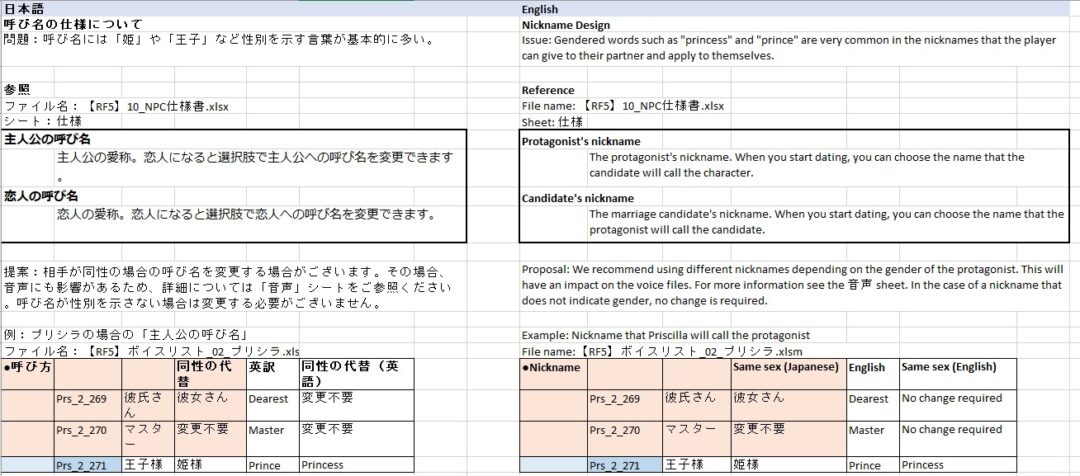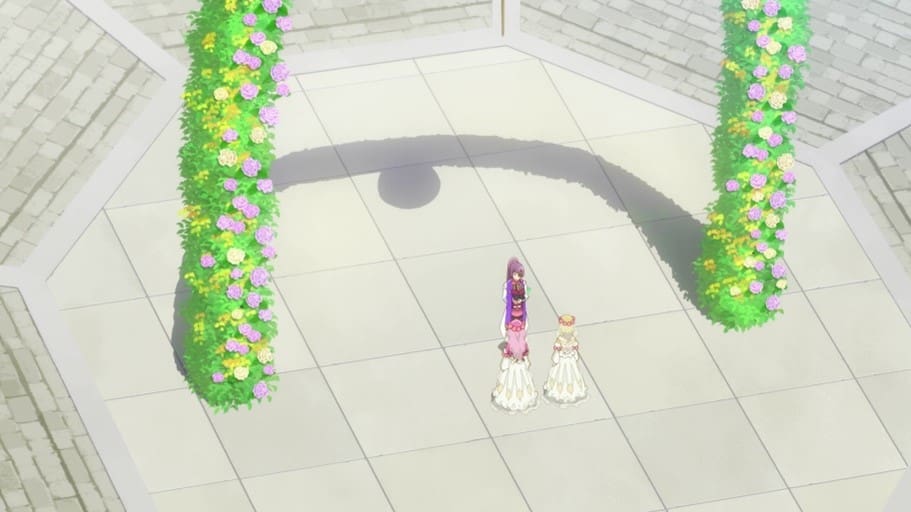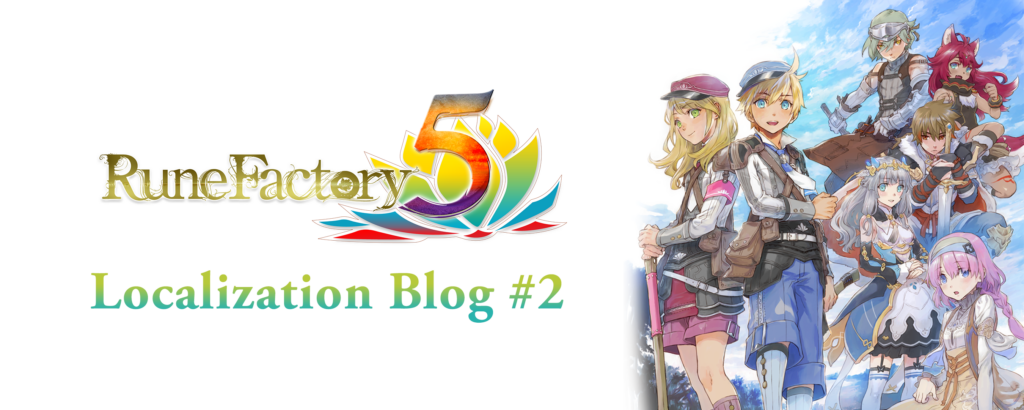Rune Factory 5 Localization Blog #2
Hello and welcome to our second localization blog for Rune Factory 5! We just made a few big announcements for the upcoming North American release of this long-awaited new entry in the Rune Factory series. The first, of course, is the release date: March 22, 2022. We know that seems far away—those of us working on the game feel the same way!—but rest assured that we’re doing everything we can to bring you the best Rune Factory experience possible.
Our second announcement is something that we’ve been working toward for many years: Rune Factory 5 will be the first game in the series to include same-sex marriage. This means that from the start of the game you can marry any of the 12 wonderful marriage candidates as Ares or Alice without avatar-swapping or other conditions. This feature was not present in the Japanese release of the game in May of this year, but will be added to that version in a future patch. It will be included in our game from launch.
Since well before I joined XSEED, our team has argued in favor of including same-sex marriage in Rune Factory and STORY OF SEASONS. For this blog entry, I’d like to provide a brief history of its inclusion in Rune Factory 5 and describe what you can expect to experience when the game is in your hands in March 2022.
Let me start by saying that adding same-sex marriage didn’t delay the game’s Western release. We always planned to release the game well after Japan due to the amount of time required to translate it into French and German from English, as well as the availability of the development team for quality assurance testing. Implementing this new feature did take time, but we adjusted our overall schedule so that it didn’t affect our release date.
Localization Begins
The English translation of Rune Factory 5 began in March 2020, right as XSEED transitioned to a work from home model. One of the last things we did as a team in the office was to gather around and discuss the character names and other localization questions, a subject we covered in our first localization blog. We had asked for same-sex marriage to be included in the game as early as 2018 and felt optimistic after it appeared in STORY OF SEASONS: Friends of Mineral Town. However, as we started reviewing design materials and text files, we grew worried that Rune Factory 5 didn’t have it.
We asked our main liaison with the development team—Marvelous’ localization department in Japan—to check their plans for same-sex marriage. They confirmed that it was not planned for Rune Factory 5, but that they would ask about the possibility of adding it. Thankfully, the game’s producer at Marvelous and others within the company agreed that including this feature was important and began to push for it. At the same time, Marvelous’ localization team laid some ground rules for its implementation to make sure that players would have the same experience regardless of which character they pursued.
Laying the Groundwork
While this discussion continued internally, Marvelous gave us a design document detailing all the NPC-related gameplay elements. This massive Excel sheet full of flowcharts explained the mechanics behind familiar Rune Factory features such as dating, marriage, and children. We were asked to review this document and provide ideas for how to implement same-sex marriage, noting areas that might require revisions or complete overhauls.
At this point, we had disappeared into the black hole that was the first few months of working from home under COVID, scrambling to adjust our processes to account for all remote work, with everyone under a tremendous amount of stress in their lives. Our team of translators and editors progressed steadily through the game’s text, which at that time did not include same-sex marriage.
Despite this uncertainty, we kept same-sex marriage in mind from the beginning. For example, we used programming tags known as “gender tags” to change pronouns and other words depending on the player character’s gender, and so we asked our team to make sure all the dialogue applied to same-sex marriage scenarios. Here’s an example of an early translation from April 2020.

The player character’s gender determines which word within the tag (he,she) will appear on screen. Our most recent version nearly 18 months later has the gender tag in the same spot, so all the groundwork we laid eventually paid off.

Ryker uses "he"

Ryker uses "she"
As translation and editing continued, so did work on the design document that Marvelous had requested. After months of drafting and review, in August 2020 we submitted a proposal to Marvelous regarding same-sex marriage implementation. Here is a snippet discussing romantic nicknames, covered in more detail below. (Note that all localization information seen in this image was not final at the time and not indicative of the nicknames in the final game.)

Meanwhile, the game’s creative team also looked into adding same-sex marriage, and in late September we received a document describing how they could approach each gameplay element that would be affected by including the feature. They also proposed solutions for addressing more difficult problems, such as how to update the already finished wedding cutscenes for each pairing. We provided feedback on all these topics, and the developers went to work planning the implementation.
Localization was still in full swing when these conversations took place. As with most titles that are in-development during localization, Rune Factory 5’s Japanese source text was being updated regularly, and our team had to be agile to adjust to changes. We also prepared for the English voice recording sessions, which took place over the course of five weeks from November to December.
Capturing Voices
Recording for Rune Factory 5—a subject that we plan to cover in more detail in a future localization blog—was completed remotely. While preparing the voice script, we noted all lines that might need a same-sex marriage version and included those alternatives. We also included gender-neutral versions in case we needed a single voice line that would work for both possibilities, since we didn’t yet know how the same-sex relationship lines would appear in the game if the feature was implemented. This meant we had our bases covered in case we couldn’t have same- and opposite-sex voices. Fortunately, we have both.
This implementation is mostly seen with the nicknames that you can ask marriage candidates to call your character when you start dating and get married. While most characters have a “Husband” or “Wife” option that will differ depending on if you are playing as Ares or Alice, there are also some unique variations for each character. For example, you can ask marriage candidate Lucas to call you “Ma Chérie” if you are playing as Alice or “Mon Chéri” if you are playing as Ares. We also took “Mon Amour” as a gender-neutral alternative but ended up not using it. Here are all three lines we recorded:
Ma Chérie
Mon Chéri
Mon Amour
(When we were doing localization QA on this part of the game before the alternatives were implemented, one tester reported “Ma Chérie” as a bug when said by Lucas to Ares because it is grammatically incorrect in French.)
From Design to Reality
The game’s localization began to wind down in the first three months of 2021 as we proofed files and double-checked our English voices. Localization QA was scheduled to start in late May and run for three months. We also continued to send our text to French and German translators. In January, we received a comprehensive document detailing all the steps that would be necessary to implement same-sex marriage, so we finally had a concrete plan to turn it into reality. We received a schedule in February, with new text for localization planned for delivery in April.
That text started to arrive as scheduled, and as we reviewed it we were really pleased with the new additions. Many of the minor changes, such as swapping “husband” for “wife,” let players have the same experience regardless of their relationship. The Japanese text doesn’t use gender tags like the English, French, and German versions do, so it was necessary to create completely new text entries to account for these variations in Japanese. As seen in the example with Ryker’s line, we added a gender tag because our text uses a gendered pronoun while the Japanese doesn’t.
Besides changing dialogue and nicknames, the main addition for same-sex couples are new events where they receive children to care for, which are different from the pregnancy and childbirth events for opposite-sex couples (but I won’t get into details to avoid spoilers). We liked the direction that the writers took for these events, and only requested that one section end with the player’s spouse welcoming the newest member of their family with a unique line to ensure total parity between all possible variations of the scene.
An early development build with same-sex content also arrived around this time. We were delighted to see that hugs, kisses, and all other displays of affection appeared exactly as they did for opposite-sex couples. We think the developers did a phenomenal job overall.
Tying up Loose Ends
There were still a few interesting issues to work out before localization QA started. For example, there was the matter of a stamp that the player receives for getting married. The original design resembles a wedding cake topper of a bride and groom, while the redesign features a pair of wedding rings.

Original Design

Redesigned Version
We also received the new wedding cutscenes designed for same-sex couples.

Priscilla and Alice

Martin and Ares
We had been working on the game’s English version for over a year at this point, and viewing these new cutscenes was an emotional moment. This was something we had argued to be included for many years, and we’re so grateful to everyone who helped make it a reality. Most of all, we’re thankful to the many patient fans for asking for its inclusion in social media comments and emails over the years. You’re our favorite part of working on this series, and we hope that we’re able to deliver an experience that will meet your expectations.

